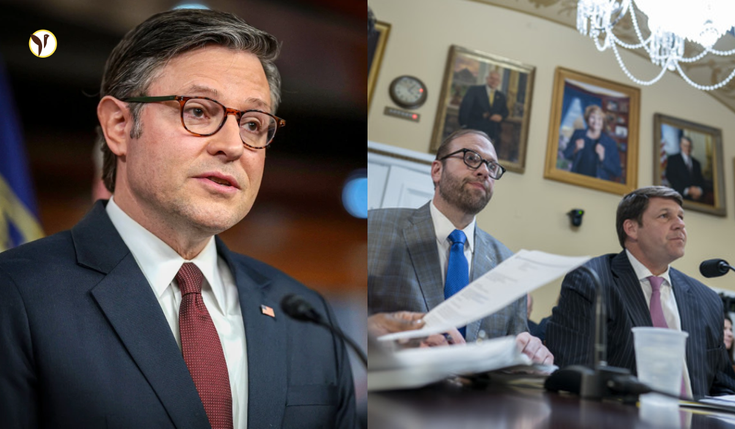Here’s what’s going on. House Republicans are kind of stuck right now. They’ve been going back and forth over how to handle tax cuts — and it’s getting pretty heated. Speaker Mike Johnson had plans to move a budget forward, but honestly, that’s on hold because everyone’s pulling in different directions.
The main issue? Some leaders, like Jason Smith (he’s the Ways and Means Chair), want to go big. He’s talking about a $5.5 trillion plan that keeps all of Trump’s 2017 tax cuts and even adds stuff like no taxes on tips or overtime. But others, like Budget Chair Jodey Arrington and Rep. Chip Roy, are saying, “Hold on — that’s too much unless we seriously cut spending.” They want something closer to $4.7 trillion. It’s basically a tug-of-war between cutting taxes and not blowing up the deficit even more.
And honestly, no one’s backing down yet.
Behind the Scenes: Budget Fights and Tough Choices
This isn’t just about the numbers — it’s about what the government can and can’t afford to do. And some of the ideas being floated are definitely raising eyebrows.
-
There’s a big split on how to actually pay for these tax cuts. Some folks want deep cuts to federal programs, while others say we shouldn’t go that far.
-
Medicare and food assistance (like SNAP) could be on the chopping block. That’s already upsetting a lot of people — especially because Trump himself has said he doesn’t want Medicare touched.
-
Some Republicans are even suggesting new work requirements for Medicaid and food stamps, so more people would need to have jobs to qualify for help. That’s controversial too.
-
Arrington also wants to pull back on biofuel tax breaks, which is ticking off lawmakers from farm-heavy states. That issue nearly broke a big deal on the debt ceiling last year, so yeah, this could get messy.
Meanwhile, Smith and others are trying to pack all of Trump’s tax stuff into one bill — but Arrington and Roy say that’s not gonna fly unless they cut way more spending. If they can’t agree, the whole tax package could fall apart.
What Happens Next?
The party’s also not on the same page about how to roll this out. House leaders want one big package — tax cuts, border security, energy stuff, national security — all in a single bill. But hard-line conservatives like Chip Roy and Andy Harris think that’s too much at once. They’d rather take it piece by piece.
And just to make things more complicated, Senator Lindsey Graham is cooking up his own budget plan in the Senate. So now it’s not just House vs. House — it’s turning into a House vs. Senate situation, too.
There’s even talk about using tariffs to help pay for all this, which some in the GOP aren’t totally sold on. Trump says he’s planning new tariffs, so that could play a role in all this — or just make things harder, who knows?
Bottom line: Republicans have some huge decisions to make — and fast. If they don’t figure it out soon, the 2017 tax cuts expire at the end of the year. And if that happens without a new plan? We could be looking at what one GOP lawmaker called the “largest tax hike in history.”







